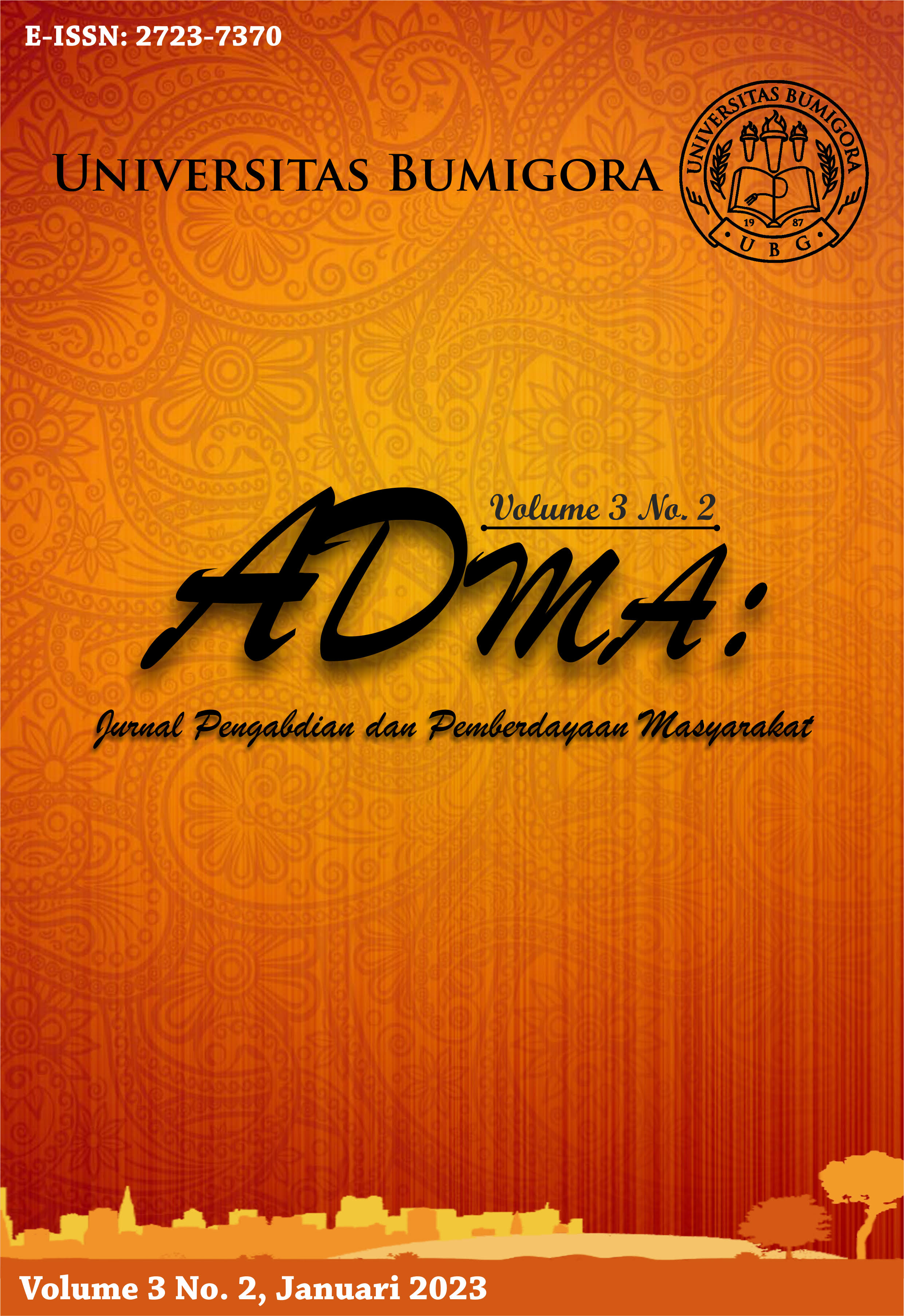Pengolahan Limbah Kulit Buah menjadi Eco-Enzyme pada Siswa SMKN 10 Merangin
DOI:
https://doi.org/10.30812/adma.v3i2.2506Keywords:
Waste, fruit peel, eco-enzymeAbstract
Fruit peel waste, so that it is not problematic for the environment and health, can be used as a source of eco enzyme raw materials, which are the result of fermentation of fruit/vegetable residue, sugar, and water. Eco enzymes can be made by mixing organic waste, such as fruit and vegetable waste, with sugar and water in a ratio of 3: 1: 10. Basically, all fruit and vegetable waste can be used as raw material for making eco enzymes.
The service activity of processing fruit peel waste into Eco-enzyme invites students to handle waste in a simple way around the school. This service activity is carried out through group practice. Making eco enzyme invites students to use this liquid as a natural cleanser, one of the experiments to handle the waste.
Using fruit peel waste as an eco enzyme as an alternative to cleaning fluid adds insight and skills in processing fruit peel waste into cleaning fluid.
References
Chandra, B. 2006. Pengantar Kesehatan Lingkungan (EGC: Jakarta).
Eviati, S. & Sulaeman, M. 2009. Analisis Kimia Tanah, Tanaman, Air, dan Pupuk. Balai Penelitian Tanah. Bogor, 246.
Galintin, O., Rasit, N. & Hamzah, S. 2021. Production and characterization of eco enzyme produced from fruit and vegetable wastes and its influence on the aquaculture sludge. Biointerface Research in Applied Chemistry, 11(3): 10205-10214.
Hemalatha, M. & Visantini, P. 2020. Potential use of eco-enzyme for the treatment of metal based effluent. En IOP Conference Series: Materials Science and Engineering. IOP Publishing: 12016.
Maryoto, A. 2020. Manfaat Serat Bagi Tubuh. Alprin.
Ramadani, A.H., Rosalina, R. & Ningrum, R.S. 2019. Pemberdayaan Kelompok Tani Dusun Puhrejo dalam Pengolahan Limbah Organik Kulit Nanas sebagai Pupuk Cair Eco-enzim. En Prosiding Seminar Nasional Hayati. 222-227.
Suryana, D. 2018. Manfaat Buah: Manfaat Buah-buahan. Dayat Suryana Independent.
Thirumurugan, P. & Mathivanan, K. 2016. Production and analysis of enzyme bio-cleaners from fruit and vegetable wastes by using yeast and bacteria. Student project Report (DO Rc. No. 1082/2015A: 4-6.














